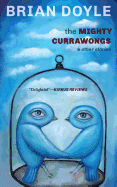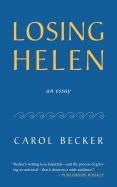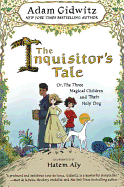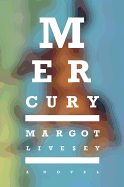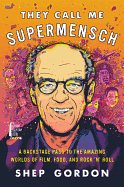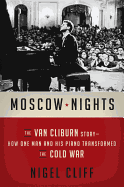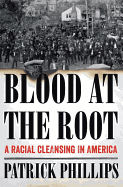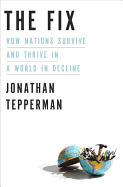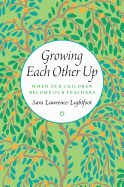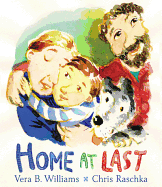Friday, September 30, 2016
It's impossible to talk about haunted houses without mentioning Shirley Jackson's 1959 classic, The Haunting of Hill House. The terror of Jackson's story builds slowly, then suddenly, as four people in search of proof of the supernatural find themselves terrified by the house they are staying in. The beauty of Jackson's story--and what makes it so utterly creepy--is the vagueness: Are these people living in a truly haunted house, or are they haunted by their own fear? 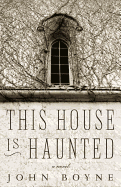 This same subtle build, stacked with questions and unknowns, can be found again and again in fiction, with regal old mansions sagging beneath the weight of their painful histories. John Boyne's This House Is Haunted plays with classic themes from Victorian ghost stories, as a governess is called to work in an old mansion in the English countryside, only to find herself dogged by a vicious ghost upon her arrival. In Newport, author Jill Morrow imbues the story of a gold-digging second wife with an unexpected twist: the fiancé in question, the very wealthy Bennett Chapman, insists that he's been instructed to marry this much younger woman by the ghost of his late wife. Chapman's family and closest advisers converge on the Chapman estate in Newport, R.I., to a séance with the first Mrs. Chapman, only to find the mansion holds as many secrets as it does answers.
This same subtle build, stacked with questions and unknowns, can be found again and again in fiction, with regal old mansions sagging beneath the weight of their painful histories. John Boyne's This House Is Haunted plays with classic themes from Victorian ghost stories, as a governess is called to work in an old mansion in the English countryside, only to find herself dogged by a vicious ghost upon her arrival. In Newport, author Jill Morrow imbues the story of a gold-digging second wife with an unexpected twist: the fiancé in question, the very wealthy Bennett Chapman, insists that he's been instructed to marry this much younger woman by the ghost of his late wife. Chapman's family and closest advisers converge on the Chapman estate in Newport, R.I., to a séance with the first Mrs. Chapman, only to find the mansion holds as many secrets as it does answers.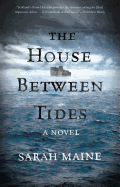 The secrets in The Loney and The House Between Tides are literally buried within the structures of the old mansions. In The Loney, by Andrew Michael Hurley, the bones of an infant are found concealed in the walls of the Lancashire coastline house to which a family goes each year. In Sarah Maine's The House Between Tides, the bones are in the foundation of Muirlan, a turn-of-the-century mansion in Scotland's Outer Hebrides. Both novels move backward and forward through time to piece together two very different, but perfectly eerie, tales of the long shadows the past casts over the present. --Kerry McHugh, blogger at Entomology of a Bookworm
The secrets in The Loney and The House Between Tides are literally buried within the structures of the old mansions. In The Loney, by Andrew Michael Hurley, the bones of an infant are found concealed in the walls of the Lancashire coastline house to which a family goes each year. In Sarah Maine's The House Between Tides, the bones are in the foundation of Muirlan, a turn-of-the-century mansion in Scotland's Outer Hebrides. Both novels move backward and forward through time to piece together two very different, but perfectly eerie, tales of the long shadows the past casts over the present. --Kerry McHugh, blogger at Entomology of a Bookworm
The Mighty Currawongs and Other Stories
by Brian Doyle
The Mighty Currawongs and Other Stories by Brian Doyle (Martin Marten) roams broadly in subject matter, but always offers joyful, whimsical wordplay and an abiding love for life's absurd and profound moments. These short stories--almost all under 10 pages--deal specifically with human experiences and relationships, rather than embracing the wider natural world of Doyle's novels, but the same voice and fanciful tone appear clearly.
A Boston basketball league plays through hilarity and scuffles, and finds a player who deepens the game. A likable archbishop loses his faith; a grandfather teaches his grandson to play chess; a tailor offers a young newspaperman sartorial and other advice. Through these everyday incidents, Doyle's approach to the world is poignant (as in a veteran's memories of the Vietnam War) but steadfastly hopeful. Indeed, the only criticism of his work might be for his unrelenting optimism, expressed by consistently likable, essentially good characters. But with his mastery of language and eye for detail, Doyle's characters always feel authentic, and their ups and downs are realistically proportioned. His gift for finding the sublime in even the small and dirty details is alive and gleaming in this short story collection. --Julia Jenkins, librarian and blogger at pagesofjulia
Discover: With Brian Doyle's reliable good humor, this collection reveres human efforts and love in situations both moving and laughable.
Mercury
by Margot Livesey
Multi-layered domestic dramas are Margot Livesey's specialty. In Mercury, she again probes contradictions in human relationships, this time orbiting the often perilous abyss of middle age and casting her gaze on matters of perception in both literal and figurative terms.
Donald Stevenson is a staid, 39-year-old surgical ophthalmologist-turned-optometrist who lives and works in a Boston suburb. In humble, intimate prose that percolates with impending tragedy, Donald recalls his life and tells how a chasm developed between him and Viv, his wife of nine years. A restless and impulsive former mutual fund financier, Viv gave up her unfulfilling professional life to pursue her earlier life's passion for horses, co-managing a stable called Windy Hill. There she cares for Mercury, a five-year-old, dapple-gray Thoroughbred, and forges such a deep bond that she pins her affections, hopes and dreams of winning a horse-riding championship upon the horse. After Windy Hill sustains a mysterious break-in, Viv--whose myopic, first-person account is sandwiched between Donald's telling of events--conveys how she secretly took security matters into her own hands to keep her adored Mercury from danger. The consequences of this decision become far reaching, life changing and soul shattering.
Livesey (The Flight of Gemma Hardy) is a reflective, insightful writer. She offers a well-drawn supporting cast and skillfully unravels details that heighten the suspense and surprise of a sobering story. She delves into divisive aspects of deceit, desire, regret and ideals, and how the choices people make can affect and torment innocent lives in extraordinary ways. --Kathleen Gerard, blogger at Reading Between the Lines
Discover: The marriage of a couple on the cusp of middle age comes undone by a beautiful Thoroughbred horse.
Biography & Memoir
Losing Helen
by Carol Becker
Carol Becker, a middle-aged only child, had the talk no one likes to have with her widowed mother, Helen, when Helen was 93 years old. "My mother was already quite old, but she did not seem old to me.... She still looked glamorous.... She walked with pride, wore heels every day, and... had 'all her marbles.' " At that time, Helen expressed that when she died, she wanted to be cremated, her ashes scattered at sea. But five years later, when Helen was in hospice, Carol discovered that Helen's contract with the Neptune Society--paid in full--had been amended: Helen wanted to be buried with her husband, Carol's father, instead. What follows is a chronicle of Carol's devotion to her mother--in life and in death--and her odyssey to ensure that Helen's ashes successfully traveled from Tamarac, Fla., to her final place of rest in Paramus, N.J. The journey becomes fraught with complications since Carol's father was Jewish, and while Helen never renounced her Polish-Catholic faith, she "let it slide." This technicality poses unforeseen challenges to her mother's interment in a Jewish cemetery and encourages Carol to examine her own beliefs, memories, grief and the strength of the mother-daughter bond.
Losing Helen is a compact essay whose themes probe deep. In Becker's reflective prose, she acknowledges that all "art making and writing is just an attempt to give... unfathomability form. I am not sure anyone... succeeds." Becker (The Invisible Drama) does indeed succeed--profoundly. This meditative, grace-filled gem is moving and soul-enriching. --Kathleen Gerard, blogger at Reading Between the Lines
Discover: A devoted, middle-aged daughter chronicles her mother's life, death and interment, and how it deeply affected her own life.
Treehab: Tales from My Natural Wild Life
by Bob Smith
When gay stand-up comedian and novelist Bob Smith received his 2007 ALS diagnosis (or, as he calls it "my you're-gonna-die-agnosis"), a friend remembers him saying, "Lou Gehrig's Disease? I don't even like baseball!"
Smith's smart, sassy and endearing essay collection, Treehab, explores a lot of ground--including his love of nature, his travel adventures, his decision to become a father (as a sperm donor to two lesbian friends), his pioneering career (he was the first out gay comedian booked on the Tonight Show and to headline a solo HBO special), and his enduring optimism and search for joy while dealing with the degenerative disease amyotrophic lateral sclerosis.
Smith (Remembrance of Things I Forgot) has a refreshing and twisted sense of humor--especially in the face of mortality. As a preteen rock collector, the first two stones he bought and treasured for years were a green piece of asbestos and some uranium glass that glowed "like it was trying to shout, 'Cancer!' " He and his friends enjoy gallows humor. One friend was envious of Anne Frank's hiding place in Amsterdam ("It had a skylight"). When a friend announces her cat has cancer, Smith asks, "Was she a smoker?" But he can also be thoughtful and inspiring. One essay dismantles the absurdities of most organized world religions, and Smith comes up with his own commandments (including "I shall not believe in a God who is meaner than I am"). Treehab is a delightful, moving and heartfelt collection that showcases the best of Bob Smith. --Kevin Howell, independent reviewer and marketing consultant
Discover: Stand-up comedian and novelist Bob Smith's potent collection of essays is as hilarious as it is immensely touching.
They Call Me Supermensch: A Backstage Pass to the Amazing Worlds of Film, Food, and Rock 'n' Roll
by Shep Gordon
In 1968, wiry-haired 27-year-old Shep Gordon, a Jewish kid from Long Island, arrived at a fleabag motel in Hollywood with just a few bucks, his only ambition to sell pot and LSD. There he met Janis Joplin, Jim Morrison and Jimi Hendrix, who told Gordon he needed a legit cover if he was going to sling drugs, before introducing him to a young band in need of a manager: Alice Cooper.
They Call Me Supermensch is the entertaining tale of how "Little Shep from Oceanside" came to be one of the biggest behind-the-scenes names in Hollywood, managing the careers of Alice Cooper, Luther Vandross, Raquel Welch, Teddy Pendergrass, the Gypsy Kings and Emeril Lagasse, among others. The memoir, written in a soft-hearted, self-effacing style, tells story after story of Gordon's dealings with celebrities who've made history, often to reveal that the mastermind behind their most defining moments was Shep himself. The chicken that Alice Cooper supposedly killed onstage, cementing his shock-rocker persona? That was Shep's doing. The celebrity chef phenomenon? Also Shep. Along the way are run-ins with Groucho Marx, Salvador Dalí and the Dalai Lama.
Gordon's memoir, published by Anthony Bourdain's imprint, is a close companion to Mike Myers's 2014 documentary, Supermensch. And while the memoir reveals more of the author's thoughts and context, Gordon's winsome persona is at times undercut by boastfulness and his own admitted difficulty with emotional engagement--but hey, it's his memoir, he did do all those things, and damned if he isn't a true mensch! --Zak Nelson, writer and bookseller
Discover: This charming memoirist happens to be the living embodiment of "sex, drugs and rock 'n' roll," and the engineer of American foodie culture.
Moscow Nights: The Van Cliburn Story--How One Man and His Piano Transformed the Cold War
by Nigel Cliff
In Moscow Nights: The Van Cliburn Story--How One Man and His Piano Transformed the Cold War, historian Nigel Cliff (The Last Crusade) brings to life Van Cliburn's unexpected triumph and its continuing implications for Soviet-American relations through the end of the Cold War. Cliff sets the story of the competition firmly in the historical context of Sputnik, political paranoia on both sides of the Iron Curtain, and both Soviet and American use of culture as a diplomatic weapon. At the same time, he never loses sight of the musician and the music: Cliff's Van Cliburn is eccentric, driven, politically innocent, big-hearted and wholly charming.
Moscow Nights is an engaging account of an extraordinary historical moment, best read with Van Cliburn's recording of Tchaikovsky's Piano Concerto No. 1 playing in the background. --Pamela Toler, blogging at History in the Margins
Discover: A Texas piano prodigy eased global tension and became a classical music rock star in the process.
History
Pearl Harbor: From Infamy to Greatness
by Craig Nelson
Craig Nelson (Rocket Men) sails into crowded waters with Pearl Harbor: From Infamy to Greatness, his history of the Japanese assault on Pearl Harbor. Enough has already been written about the attack to keep history buffs reading from here to eternity. However, considering the depths already sounded by books on the subject, Nelson's work feels surprisingly fresh.
Pearl Harbor begins long before that fateful Sunday morning. Nelson gives a concise history of Japan, through the country's extraordinary modernization in the Meiji era (1868-1912) and its burgeoning militarism as exemplified in the Russo-Japanese War (1904-5). This period, and the decisive naval engagement of Japan's war with Russia (the Battle of Tsushima), helps explain why Imperial Japan launched what seems, in hindsight, like a suicidal sneak attack on Oahu. The immediate background of the attack, the day-by-day duplicitous diplomacy and handwringing among Japan's leaders, is incredibly tense.
The account of the attack itself shows Nelson's keen eye for humanizing detail. He skillfully depicts the blood and smoke and burning oil, and the roar of Zero engines as they strafe sailors, with unforgettable touches like the sound of record players stuck on certain songs as ships sink. Nelson also chronicles the Doolittle Raid on Tokyo, the rest of Pearl Harbor's aftermath, and debunks the conspiracy theory that FDR knew about it in advance and did nothing to stop the attack (a theory begun by the two senior navy and army officers on Oahu at the time). This important new piece of Pearl Harbor scholarship is published in time for the attack's 75th anniversary. --Tobias Mutter, freelance reviewer
Discover: Pearl Harbor is a comprehensive, engaging new history of the attack that thrust the United States into World War II.
Blood at the Root: A Racial Cleansing in America
by Patrick Phillips
Patrick Phillips's Blood at the Root examines the 1912 murder of Mae Crow, a young white woman assaulted and killed in Forsyth County, Ga. Mae's community quickly blamed three young black men in the area for her death. Mobs of angry white people celebrated the swift hanging of the teens; fear and hatred peaked, ultimately leading to the forced expulsion of every black resident of the county (which remained all white up until the 1980s).
Blood at the Root offers more than a true crime account of a horrific (and unsolved) 20th-century murder; Phillips (National Book Award finalist for the poetry collection Elegy for a Broken Machine) provides an analysis of that crime's repercussions, placing the fallout from Mae's murder squarely in the context of Forsyth's racist history. He rebuilds the racially checkered history of the county, starting with the forceful removal of the Cherokee in the 1830s and continuing up to the violent all-white counter-protests against 1987 civil rights marchers in the area. Raised in Forsyth County, Phillips reflects on his own experiences as a white man in an all-white county, merging his personal recollections of the 1987 marches with historical records to great effect.
"If history is written by the victors," writes Phillips, "a hundred years after the expulsions the victorious white people of Forsyth have successfully written the racial cleansing completely out of mind." Blood at the Root is an attempt to right that wrong, piecing together oral histories, photographs, court documents and newspaper stories to tell a story that has too long been "safely hidden in plain sight." --Kerry McHugh, blogger at Entomology of a Bookworm
Discover: Patrick Phillips analyzes the racial history of Forsyth County by exploring the forced expulsion of the county's black residents in 1912.
Political Science
The Fix: How Nations Survive and Thrive in a World in Decline
by Jonathan Tepperman
Divided into 10 sections, where Tepperman addresses the "Terrible Ten" problems in the world, The Fix challenges misperceptions, such as Brazil's solution to income inequality. Giving cash to the poor resulted in monumentally positive changes and virtually no corruption, instead of the misuse and abuse the opposition predicted. Tepperman uncovers initiatives like Mexico's answer to political gridlock, which have often been overshadowed by other unrelated crises. The Fix also emphasizes the universal qualities of these answers in order to illustrate how nations as diverse as Indonesia, Botswana and Canada can educate others, despite differences in geography, population or wealth.
The Fix is a source of inspiration and a spring of hope. Leaders of all walks of life will benefit from the ideas offered in this comprehensible collection of ingenuity, as will any voter. Armed with this knowledge and the skills to apply the basic underlying concepts, members of a community--be it a nation or a business--can make well-informed decisions and begin viewing the once insurmountable challenges as attainable goals. --Jen Forbus of Jen's Book Thoughts
Discover: This comprehensive, intelligible guide to major dilemmas plaguing countries around the world offers hope for change that can benefit everyone.
Parenting & Family
Growing Each Other Up: When Our Children Become Our Teachers
by Sara Lawrence-Lightfoot
Lawrence-Lightfoot focuses on the developmental period between 15 and 35. Most of the parents in her portraits are well-educated professionals. Their diversity is in their class and citizenship backgrounds, their race and sexual orientation, and their parenting experiences that include the intimate and calm, a variety of common troubles and a few cases of children with mental or physical illnesses. In their conversations with Lawrence-Lightfoot, parents discuss how their children taught them to "give them space, honor their individuality, and see them as 'other.' " They also explore how it is possible to get distance on the most volatile conflicts, pursue empathy in adversity and listen without preconceptions and the compulsions to fix or criticize. Not only can children teach parents about their changing selves and the changing world, they can also shed new light on their parents' relationships with their own parents and siblings, "become our mentors and cheerleaders, urging us to take on the next developmental chapters of our lives, applauding our efforts that risk change, supporting our new adventures." --Sara Catterall
Discover: A renowned sociologist and author looks at how parents learn from their teenage and adult children.
Children's & Young Adult
The Inquisitor's Tale: Or, The Three Magical Children and Their Holy Dog
by Adam Gidwitz, illus. by Hatem Aly
Six years of extensive research and a natural storyteller's gift shine in this spiffily spun novel that begins on a dark night in 1242 when travelers meet at the Holy Cross-Roads Inn ("a day's walk north of Paris"). They exchange stories of three "magical children"--enemies of King Louis IX--whose fates intertwine: Jeanne the visionary peasant girl with her mysteriously resurrected greyhound named Gwenforte; William the giant, an impossibly strong Benedictine monk with North African roots; and Jacob, the gentle Jewish healer of mortal wounds. A beer maker begins the festivities with "The Brewster's Tale," entertaining an ale-drinking, occasionally interrupting audience of "[b]utchers and brewers, peasants and priests, knights and nobodies." When her account tapers off, a nun picks it back up, and this is how Gidwitz's splendidly meandering bit of storytelling takes shape. Morsel by morsel, readers learn about each of the three miracle-working children and how they transcend their initial preconceptions about each other to become true friends.
Over-the-top skirmishes, comical triumphs over thugs, unlikely allies, religious persecution, stinky French cheese (tastes like feet and "life"), noble acts of bravery, deep-seated emotion, profound theological questions--and a fatally flatulent dragon--intermingle in this suspenseful novel set in a medieval world where atrocities are committed in the name of God. In the style of "illuminated" medieval texts, Egyptian-born illustrator Hatem Aly illuminates Gidwitz's story with whimsical black-and-white drawings that enliven this philosophical swashbuckler. --Karin Snelson, children's & YA editor, Shelf Awareness
Discover: In Adam Gidwitz's cleverly crafted narrative, three magical children who have made enemies of King Louis IX band together in a cruel and dangerous medieval France.
Home at Last
by Vera B. Williams and Chris Raschka
Lester is so happy finally to be with a forever family: Daddy Albert, Daddy Rich and their snuffly dog Wincka with her velvety forehead. He and his adoptive parents put away his new clothes in his new bedroom, but Lester is not yet ready to store his beloved action figures in the toy cupboard: "They have to stay right here in case anyone comes to hurt me," he tells his dads. All is going well for the new family... except for Lester's late-night excursions to his dads' (and Wincka's) bedside. Night after night they wake to see the boy swooping his toys over them; night after night they lead him back to the room they so lovingly prepared for him. It isn't until everyone is thoroughly exhausted and cranky that the truth finally comes out: "There's all three of you in your bed in there, and in here is nobody. Just me. Just me. I'm scared." The new daddies are worried and sad, but luckily, Wincka knows just what to do, and soon Lester is sleeping every night in his own bed with his brand-new velvety, snuffly "pillow."
Every child, adopted or not, can relate to Home at Last, a beautiful collaboration between Caldecott Honor author-illustrator Vera B. Williams ("More, More, More," Said the Baby) and two-time Caldecott Medal winner Chris Raschka (Hello, Goodbye Window and A Ball for Daisy). An endnote by Raschka describes how he and Williams worked together during the last months of her long life: "Vera wrote it. Vera and I drew it. And I painted it." --Emilie Coulter, freelance writer and editor
Discover: In Chris Raschka and Vera Williams's sweet collaboration, Lester and his adoptive dads are happy together except for one thing: nighttime is lonely.
Rescue Squad No. 9
by Mike Austin
For many young children, nothing tops the thrill of a loud, dangerous rescue story. Mike Austin's fast-moving, boldly illustrated picture book, a follow-up to his Fire Engine No. 9, fits the bill. The full-bleed double-page spreads burst with visual drama boosted by the urgent but simple, minimal text: "ALL CLEAR!" "HOLD ON!" Even older readers will find their pulse quickening as each crew member manages his or her role with intense focus and dedication despite crashing waves, driving rain and howling winds. Attentive readers will love the details: a newspaper headline reading "BIG STORM," the red life jacket the Dalmatian dog is wearing, purple crabs and green seaweed clinging to the rock where the sailor has crashed. An endnote provides water safety tips, and the inside covers feature sea and sky rescue tools such as air horns, ring buoys and parachute flares. This is sure to be a winner among Richard Scarry and Donald Crews fans. --Emilie Coulter, freelance writer and editor
Discover: This dynamically illustrated story about a rescue at sea by a diverse team of helicopter and speedboat emergency responders will thrill beginner readers.


